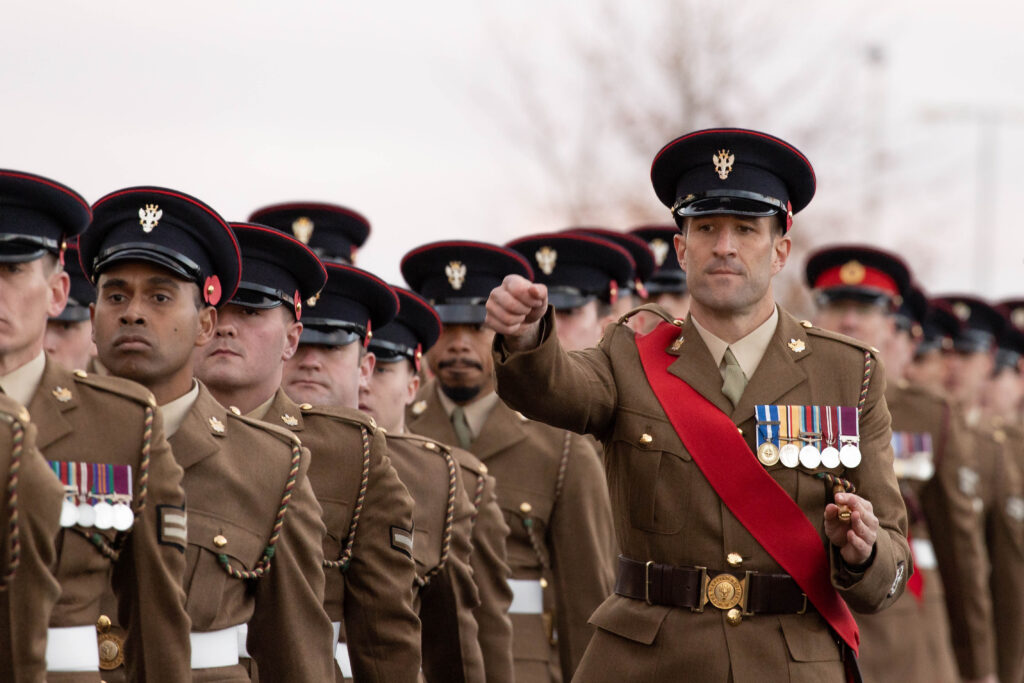
The Mercian Regiment is a relatively young yet distinguished regiment within the British Army, formed in 2007 as part of a reorganization aimed at streamlining and modernizing the infantry. Despite its recent establishment, the regiment inherits a rich heritage from its predecessor units and continues to uphold the traditions of excellence, bravery, and service.
Historical Background
The Mercian Regiment was created through the amalgamation of three historic regiments: the 22nd (Cheshire) Regiment, the Worcestershire and Sherwood Foresters Regiment (29th/45th Foot), and the Staffordshire Regiment (The Prince of Wales’s). These regiments had long and storied histories, each with its own unique traditions and battle honors dating back to the 17th and 18th centuries. By merging these units, the British Army aimed to preserve their legacies while enhancing operational efficiency.
The name “Mercian” refers to the ancient Anglo-Saxon kingdom of Mercia, which covered much of central England, reflecting the regiment’s regional roots and its connection to the communities of Cheshire, Derbyshire, Nottinghamshire, Staffordshire, and Worcestershire.
Structure and Organization
The Mercian Regiment is composed of four battalions:
- 1st Battalion (1 MERCIAN): A light infantry battalion that often undertakes rapid deployment and flexible operational roles. Based in Bulford, Wiltshire, it is highly mobile and capable of conducting a range of infantry tasks.
- 2nd Battalion (2 MERCIAN): Previously a heavy armoured infantry unit equipped with Warrior infantry fighting vehicles, it transitioned to light infantry roles, emphasizing adaptability and swift deployment. It was based in Chester but is now part of the British Army Reserve.
- 3rd Battalion (3 MERCIAN): Initially a light infantry battalion, now it operates within the Army Reserve. Based in Nottingham, it plays a crucial role in supporting the regular battalions, providing additional manpower and expertise.
- 4th Battalion (4 MERCIAN): Also part of the Army Reserve, this battalion is based in Wolverhampton and recruits from across the Midlands. It supports the regular battalions and contributes to national defense and international operations.
Operational Role
The Mercian Regiment has been actively involved in various operational deployments since its formation. Its soldiers have served in Iraq, Afghanistan, and more recently in peacekeeping missions in Africa and Eastern Europe. The regiment’s adaptability and resilience have been demonstrated in diverse and challenging environments.
In Afghanistan, the Mercian Regiment played a significant role in counterinsurgency operations, working alongside coalition forces to stabilize regions, train Afghan security forces, and support local communities. Their efforts have been crucial in maintaining security and promoting reconstruction in conflict-affected areas.
Ceremonial Duties
While primarily focused on operational roles, the Mercian Regiment also participates in ceremonial duties, representing the British Army at significant national events. Their participation in parades, commemorations, and public ceremonies helps maintain the connection between the military and the civilian communities they serve.
Traditions and Legacy
Despite its recent formation, the Mercian Regiment has quickly established its own identity while honoring the traditions of its antecedent regiments. Its cap badge features the Mercian double-headed eagle, symbolizing vigilance and strength, and its motto, “Stand Firm Strike Hard,” reflects the regiment’s determination and resilience.
The regiment’s regimental day, Mercian Day, is celebrated on September 6th, commemorating the regiment’s formation and paying tribute to its history and achievements. This day fosters camaraderie among soldiers and reinforces their shared sense of purpose and pride.
Recruitment and Training
Recruitment for the Mercian Regiment is focused on the central regions of England, aligning with its historical ties to the counties of Cheshire, Derbyshire, Nottinghamshire, Staffordshire, and Worcestershire. The regiment seeks individuals who exhibit physical endurance, mental resilience, and a strong sense of duty.
Training for the Mercian Regiment is rigorous, encompassing the standard British Army infantry training as well as specialized instruction tailored to the regiment’s operational roles. This includes weapons handling, tactical maneuvers, physical fitness, and leadership development, ensuring that soldiers are well-prepared for both combat and peacekeeping missions.
Conclusion
The Mercian Regiment, though one of the newer regiments in the British Army, carries forward a legacy of valor and service inherited from its predecessor units. Its commitment to operational excellence, ceremonial duties, and regional heritage makes it a vital part of the British military landscape. By embodying the motto “Stand Firm Strike Hard,” the Mercian Regiment continues to serve with distinction, upholding the proud traditions of the British Army while adapting to the challenges of the modern world.